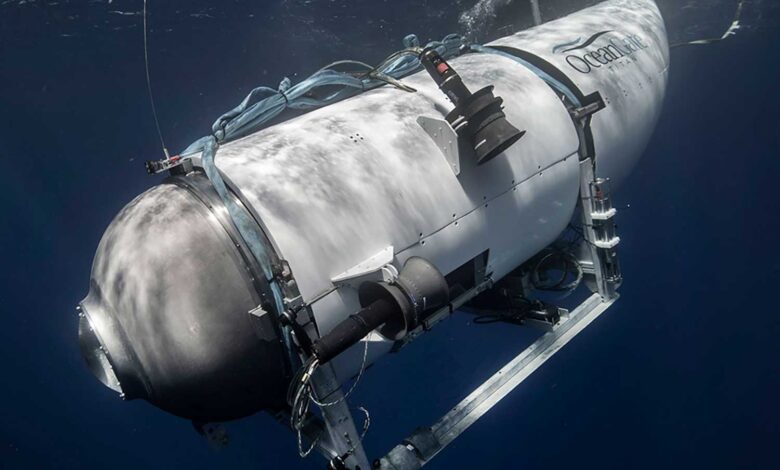
How did the Titan Sub Implosion Happen?
Investigators are currently focused on determining the cause behind the sudden implosion of a submersible carrying five individuals to explore the wreckage of the Titanic.
Any hopes of a positive outcome were dashed when the U.S. Coast Guard confirmed the discovery of debris belonging to OceanGate Expedition’s Titan near the renowned ocean liner at the bottom of the North Atlantic. This incident sparked an international rescue mission that captivated global attention due to its association with the Titanic, while the passengers on board the Titan had only 96 hours of breathable air, intensifying the urgency of the search.
The primary focus of investigators now lies in understanding the reason behind the Titan’s “catastrophic implosion,” as described by the U.S. Coast Guard. An implosion occurs when objects collapse upon themselves, unlike an explosion, which involves rapid expansion and energy release. Will Kohnen, president and CEO of submarine manufacturer Hydra Space Group, explained that an implosion happens when the water pressure exceeds the strength of the material, causing the stored energy to be released rapidly.
The Titan lost contact with the Canadian research vessel Polar Prince approximately one hour and 45 minutes after submerging to descend towards the Titanic. The wreckage of the Titanic lies nearly four kilometers below sea level, and the Titan’s debris was discovered around 500 meters away from it. U.S. Coast Guard Rear-Adm. John Mauger stated that the debris field is indicative of a catastrophic implosion of the submersible.
Undersea expert Paul Hankin revealed that searchers found five pieces of debris, including the nose cone and the front-end belt of the pressure hull, which were approximately 500 meters from the Titanic’s bow. The other end of the pressure hull was found in a second, smaller debris field nearby, suggesting the complete destruction of the pressure vessel. The immense pressure at the depth of the Titanic, estimated to be 250-280 times the surface pressure, would have resulted in a swift implosion, similar to flipping a light switch.
Concerns about the safety of the Titan had been raised in the past. David Lochridge, OceanGate’s former director of marine operations, criticized the company’s method of using acoustic monitoring to detect hull cracks and pops under pressure, deeming it inadequate and potentially dangerous. However, OceanGate defended its approach and dismissed Lochridge’s concerns. Previous records show that 46 people had successfully traveled on the Titan to the Titanic in 2021 and 2022, with one customer describing the experience as akin to a “kamikaze operation.”
J. Kim Vandiver, a professor at MIT, explained that deep-sea submersibles like the Titan are designed to withstand the pressure at certain depths and a limited number of dives. However, the pressure hull may develop micro-cracks from fatigue caused by multiple high-pressure descents, potentially compromising its integrity.
The investigation into the incident is ongoing, and Admiral Mauger did not provide a specific timeline for its completion. Recovering the bodies of the five passengers remains uncertain due to the harsh conditions at the seafloor. Experts emphasize that the implosion would have subjected the human body to an overwhelming and instant force, dissolving skin, bones, and muscles.
This tragic event serves as a reminder of the perils involved in deep-sea exploration, prompting discussions on implementing stricter regulations and inspections to enhance safety measures while continuing vital research endeavors.








































